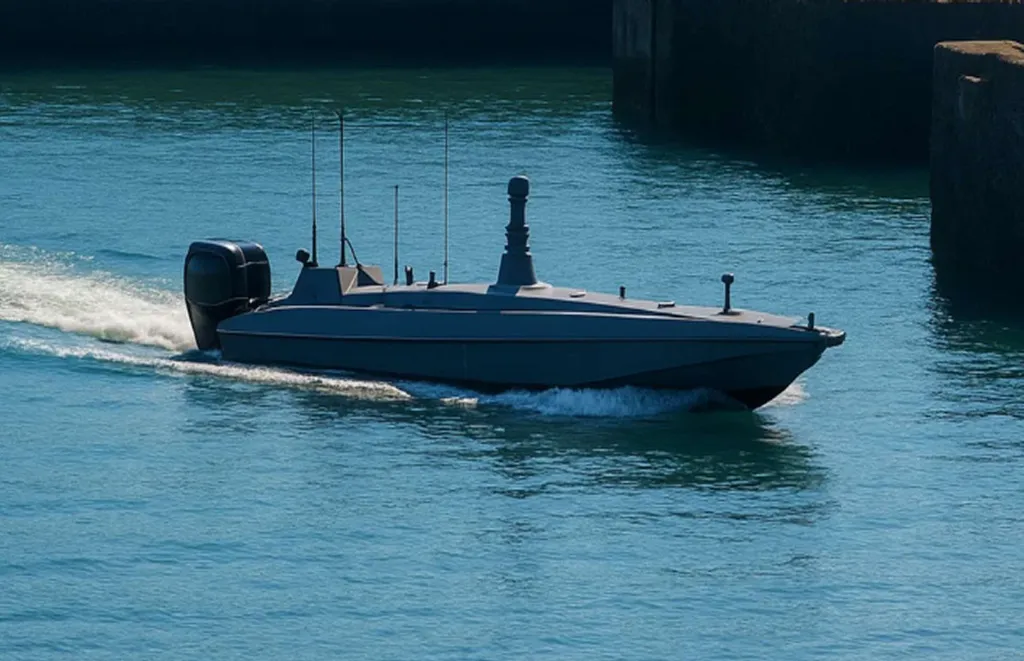Taiwan’s defence industry is rapidly advancing its asymmetrical warfare capabilities, showcasing a suite of uncrewed naval solutions designed to counter potential threats from mainland China. At the Taipei Aerospace & Defence Technology Exhibition (TADTE) 2025, the National Chung-Shan Institute of Science and Technology (NCSIST) unveiled the Kuai-Chi unmanned surface vessel (USV), a compact yet formidable addition to Taiwan’s maritime defence arsenal.
The Kuai-Chi, measuring 9 metres in length and displacing 3 tonnes, is engineered for rapid deployment. Its Lungteh-hulled design allows it to be transported in a standard 40-foot shipping container, ensuring swift mobilisation to critical coastal areas. Equipped with two Cox CXO300 diesel outboard motors, the USV can achieve speeds exceeding 40 knots, making it highly manoeuvrable in combat scenarios.
“This USV can autonomously perform coastal patrols or, in combat, deploy weapons such as Mighty Hornet-I loitering munitions from its six forward canisters,” an NCSIST spokesperson said. The Kuai-Chi’s versatility extends to ramming hostile ships, with three bow-mounted contact fuses and an integrated warhead designed to neutralise threats upon impact.
NCSIST’s collaboration with US-based defence technology firm Anduril further underscores Taiwan’s commitment to innovation. At TADTE 2025, Anduril showcased its C-500M mines and the Dive-LD unmanned underwater vehicle (UUV), both displayed at the NCSIST booth. This partnership highlights a growing trend in cross-border defence cooperation, leveraging cutting-edge technology to enhance maritime security.
Independent Taiwanese firms are also contributing to the island’s defence strategy. Drone manufacturer Thunder Tiger is offering its SeaShark USVs, which can be equipped with loitering munitions or 2.75-inch rocket pods. Meanwhile, shipbuilder Lungteh has introduced a large UUV developed in collaboration with UK-based MSubs and Marine AI. Lungteh aims to complete this project by 2026, further expanding Taiwan’s underwater surveillance and combat capabilities.
The success of unmanned systems in the war in Ukraine has influenced Taiwan’s defence budget, with a significant portion now allocated to asymmetrical and drone warfare. This shift reflects a strategic pivot towards leveraging cost-effective, scalable solutions to deter potential threats. By integrating unmanned surface and underwater vessels into its defence framework, Taiwan is positioning itself to counter potential naval invasions with agility and precision.
As geopolitical tensions in the region continue to evolve, Taiwan’s investment in unmanned naval technology underscores a broader trend in defence innovation. The Kuai-Chi USV and other uncrewed systems represent not just a response to immediate threats but a long-term strategy to maintain maritime dominance in an increasingly contested environment.

